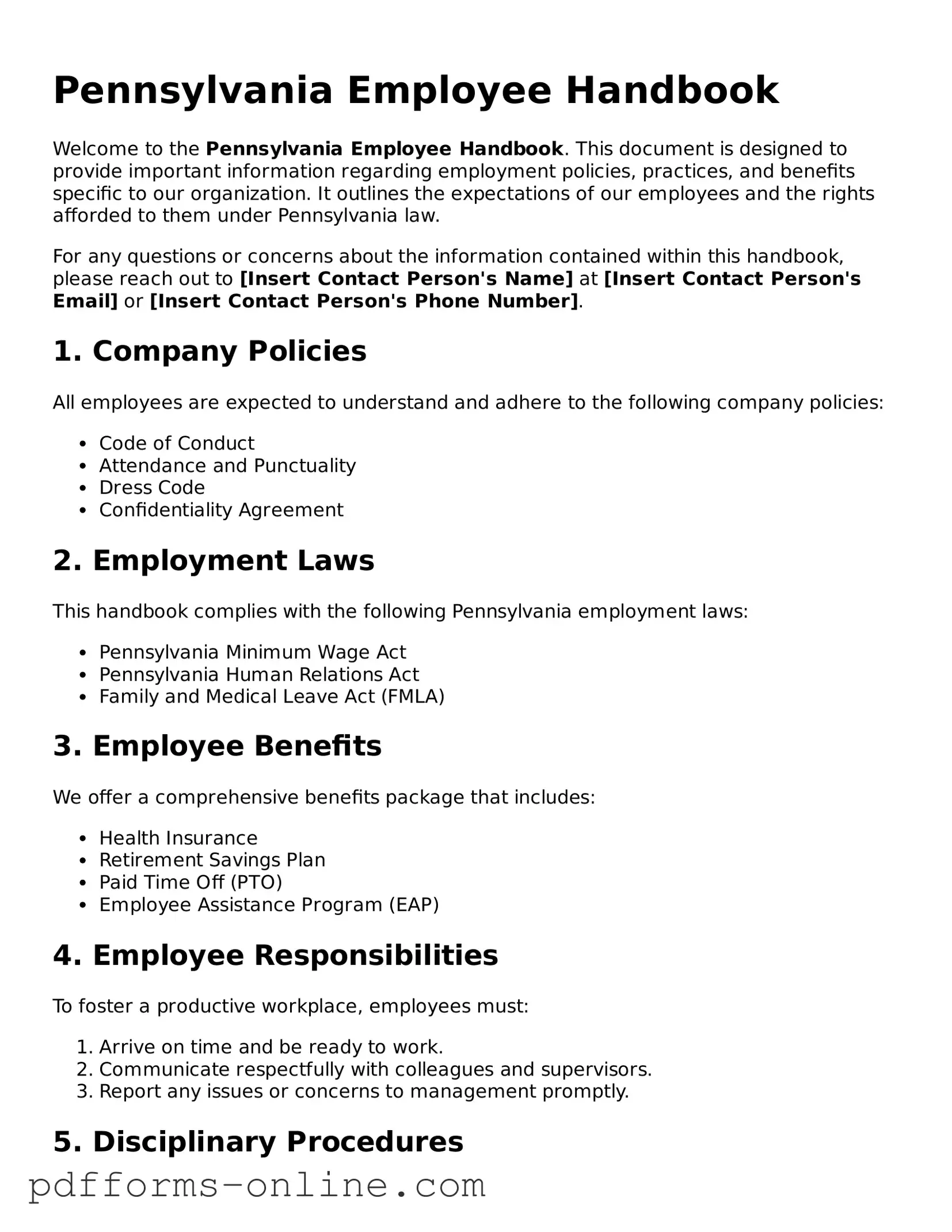Pennsylvania Employee Handbook
Welcome to the Pennsylvania Employee Handbook. This document is designed to provide important information regarding employment policies, practices, and benefits specific to our organization. It outlines the expectations of our employees and the rights afforded to them under Pennsylvania law.
For any questions or concerns about the information contained within this handbook, please reach out to [Insert Contact Person's Name] at [Insert Contact Person's Email] or [Insert Contact Person's Phone Number].
1. Company Policies
All employees are expected to understand and adhere to the following company policies:
- Code of Conduct
- Attendance and Punctuality
- Dress Code
- Confidentiality Agreement
2. Employment Laws
This handbook complies with the following Pennsylvania employment laws:
- Pennsylvania Minimum Wage Act
- Pennsylvania Human Relations Act
- Family and Medical Leave Act (FMLA)
3. Employee Benefits
We offer a comprehensive benefits package that includes:
- Health Insurance
- Retirement Savings Plan
- Paid Time Off (PTO)
- Employee Assistance Program (EAP)
4. Employee Responsibilities
To foster a productive workplace, employees must:
- Arrive on time and be ready to work.
- Communicate respectfully with colleagues and supervisors.
- Report any issues or concerns to management promptly.
5. Disciplinary Procedures
In the event of a violation of company policies, the following disciplinary actions may be taken:
- Verbal Warning
- Written Warning
- Suspension
- Termination
6. Acknowledgment of Receipt
Please sign and return the acknowledgment form below to demonstrate that you have received and reviewed the contents of this handbook:
Employee Name: ______________________
Date: ______________________
